
Mulberry, bramble: planting, pruning and care
Contents
Mulberry or Bramble, in a nutshell
- Bramble is a bush that spreads by suckers, layers very easily and bears fruit: blackberries
- Wild blackberry grows spontaneously and forms bramble thickets
- There are varieties that are sparsely thorned or even completely inermous, grown in gardens for their fruit
- Bramble can easily be trained to cover an arbour, for example
- Plant blackberry in full sun or partial shade, in any light soil rich in humus and fairly cool to produce large, very juicy blackberries
A word from our expert
Blackberry or bramble is a cousin of raspberries which stands out for black fruits generally firmer and produced in late summer. It belongs to the Rosaceae family.
Wild brambles (common bramble or bramble of the woods Rubus fructicosus, elm-leaved bramble Rubus ulmifolus, etc.) are woody, creeping plants with woody climbing stems, also capable of rising to over 1.50 m in height, of clinging to trees thanks to numerous sharp thorns and of layering several metres from the stump. These very thorny lianas, often encountered at forest edges or in hedges, sometimes form impenetrable thickets called bramble patches which nevertheless do not deter blackberry enthusiasts! This small juicy fruit with a beautiful dark coat, rich in antioxidants, vitamins and minerals, has a flavour both sweet and tart. In France, its main production area, in the Rhône-Alpes region but also in Limousin‑Périgord and Anjou, accounts for a few hundred tonnes.
Most cultivated bramble varieties have few or no thorns and high yields with fruits often very large, round or ovoid reaching 2 cm in diameter as with Loch Ness, black but also red as with the variety Dorman Red. Some are perpetual like Reuben, offering an abundant harvest of large black fruits from mid‑July to November. There are compact varieties 1 m high, which can be grown on a balcony such as Little Black Prince.
Blackberries are hardy and easy to grow, they make do with ordinary soil though they prefer fertile, well‑drained and cool soils. Shelter against a wall exposed to non‑scorching sun or in partial shade suits them perfectly and will showcase the bare wood of the flexible shoots in winter. Upright‑stemmed varieties are trained in a fan, while those with woody climbing stems are guided more horizontally and can cover an arbour.
Botanical description
Botanical data
- Latin name Rubus fruticosus
- Family Rosaceae
- Common name blackberry, bramble
- Flowering May to July
- Height between 2 and 5 m
- Exposure full sun (not scorching) or partial shade
- Soil type any loose soil, fresh and well-drained, not too calcareous
- Hardiness Excellent (-25 °C)
Blackberry belongs to genus Rubus which originates from mountains of the Caucasus in Asia Minor and has spread worldwide, benefitting from a temperate climate. The genus diversified over time and produced several hundred species, including raspberry (Rubus idaeus) and common blackberry (Rubus fruticosus). Rubus form bushes or erect or rambling climbers, with deciduous or evergreen foliage. Some Rubus are prized for ornament, such as Rubus cockburnianus, with magnificent waxy white stems, or Rubus phoenicolasius whose shoots are covered in red hairs. Do not confuse the bramble blackberry with the tree “mulberry” (white or black) whose scientific name is Morus, a tree traditionally used to feed silkworms.
Several wild bramble species occur in France such as the woodland bramble (Rubus fruticosus) which grows in shade, elm-leaved bramble (Rubus ulmifolius) which is a light-demanding species with a white, downy underside to the leaves, European dewberry (Rubus caesius) bearing very fine thorns and found along watercourses or in embankment zones… Rubus fruticosus is a very polymorphous species, capable of hybridising with many other species. Brambles tend to colonise hedgerows and are common after agricultural abandonment, representing ecologically the intermediate stage between meadow and forest. They appear about five years after natural or artificial clearance, often together with wild roses (dog-roses). Some species grow exclusively in sun (R. ulmifolius), others exclusively in shade (R. fruticosus).

Rubus fruticosus – botanical illustration by P.J. Redouté
Blackberries and hybrids resulting from various cross-breedings between raspberry and blackberry (called “loganberry” or “blackberry-raspberry”) are cultivated mainly for their fruit, with differences in size, colour and acidity. This berry has been eaten in Europe and America for about 2,000 years.
Blackberry is a thorny bramble with compound leaves of 3 to 7 leaflets, bright green, 8 to 2 cm long with prominent veins, fairly decorative with a sometimes pruinose or pubescent underside. This perennial climbing or creeping plant has a semi-shrubby, bushy habit. Shoots reach 2 to 5 m in length, and the stump occupies up to 0.5 m on the ground. Training is a way to control the plant’s development whether along a fence, mesh, trellis, pergola, arch… Many solutions are possible.
Stems are generally without thorns or with thorns much less sharp than those of wild bramble. They flower and fruit at the end of their second year of growth, then are gradually replaced by new shoots arising from the stump.
Flowering, abundant and melliferous, shows many small white-pink or violet flowers (in ‘Navajo’) 1.5 to 2 cm in diameter, grouped in clusters. The greenish, persistent calyx has 5 pointed sepals and the corolla has 5 free petals. They surround numerous stamens and pistils each attached to a carpel which, as it enlarges, will form a drupelet of the blackberry. Flowering takes place from May to July, from the first year after planting. Although the bramble blackberry is self-fertile, planting two plants is preferable to obtain a better harvest.
The fruits that form are composed of aggregated drupes on the receptacle and remain attached to it, which distinguishes the blackberry from the raspberry. Harvesting blackberries therefore requires removing the receptacle after picking. Fruit colour always changes from green to red and then to black at ripeness except for red-fruited varieties such as Dorman Red. Harvest can start in July and continue until November depending on cultivar.
Read also
Planting young fruitsMain cultivated bramble varieties
Garden blackberries are hybrids derived from the common thornless bramble, Rubus var. inermis, itself obtained by cross-breeding bramble and raspberry. A long programme of improvement and selection has produced many varieties that are thornless or nearly so, particularly productive and largely of American origin.
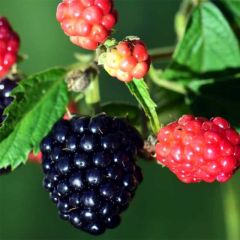
Thornless Loganberry - Raspberry-Blackberry
- Flowering time June
- Height at maturity 2,50 m
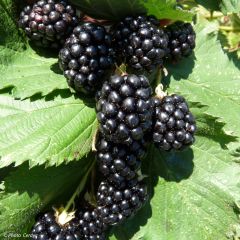
Thornless Blackberry Navaho - Rubus fruticosus
- Flowering time July to September
- Height at maturity 2,50 m

Thornless Blackberry Triple Crown - Rubus fruticosus
- Flowering time June to August
- Height at maturity 2,50 m

Rubus Buckingham Tayberry
- Flowering time June
- Height at maturity 1,50 m

Blackberry Dorman Red - Rubus fruticosus
- Flowering time May to July
- Height at maturity 3 m
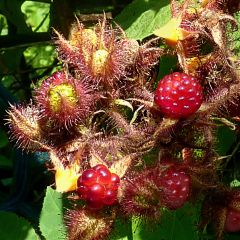
Rubus phoenicolasius 'Raisin du Japon' - Wineberry
- Flowering time June to August
- Height at maturity 3 m
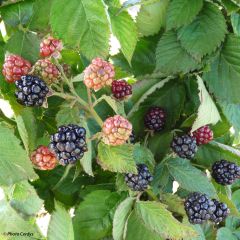
Blackberry Little Black Prince - Rubus fruticosus
- Flowering time May to July
- Height at maturity 1 m
Discover other Blackberry bush
View all →Available in 1 sizes
Available in 1 sizes
Available in 1 sizes
Available in 3 sizes
Available in 1 sizes
Available in 1 sizes
Available in 3 sizes
Available in 1 sizes
Available in 1 sizes
Available in 2 sizes
Planting
Where to plant blackberry bushes?
Cultivated brambles appreciate sunny spots with non-scorching sun or light shade, sheltered from strong winds. They tolerate all soil types, preferring rich, non-calcareous soil free from excess moisture. Avoid planting blackberries after growing potatoes, chillies, aubergines or tomatoes in the previous two years. Also avoid proximity to raspberry plants, which harbour the same pests. Blackberry bushes are generally very hardy (-25°C) but some hybrids such as Tayberry do not tolerate frosts beyond -10°C.
When to plant?
Plant fruiting bramble from autumn to spring, avoiding frosty periods, i.e. November to April.
How to plant?
Trellising allows the bush to receive maximum sun and facilitates harvest. Where possible, plan ranks oriented north–south so plants benefit from sun on both faces, with spacing of 2 m between each young plant.
Find out more about trellising blackberries in our tutorial.
- As with raspberries, you can form a fruit hedge and string a frame of 3 horizontal wires, spaced 40 cm vertically: at 80, 120 and 150 cm high for upright-stem varieties, or train the bramble up a wall strung with wires, or cover an arbour.
- Soak the root ball in water briefly before planting.
- Work the soil across a 50 cm strip to loosen it well and to 30 cm depth.
- Make an addition of compost or potting mix then optionally add a base-dressing fertiliser for fruit trees with magnesia at root level. If your soil is calcareous, provide a mulch of acidic materials (pine needles or pine bark).
- Set out a young plant every 2 m, alternating varieties for better fruiting.
- Mulch with 10 cm of B.R.F (wood chips) as bramble appreciates carbon-rich organic matter.
- Water generously.
- Trellising with ties is carried out progressively as stems grow.
In a container: place a layer of gravel or clay pebbles at the bottom of a deep pot to improve drainage.
- Fill the container with a mix of potting compost, garden soil and compost. Mulch.
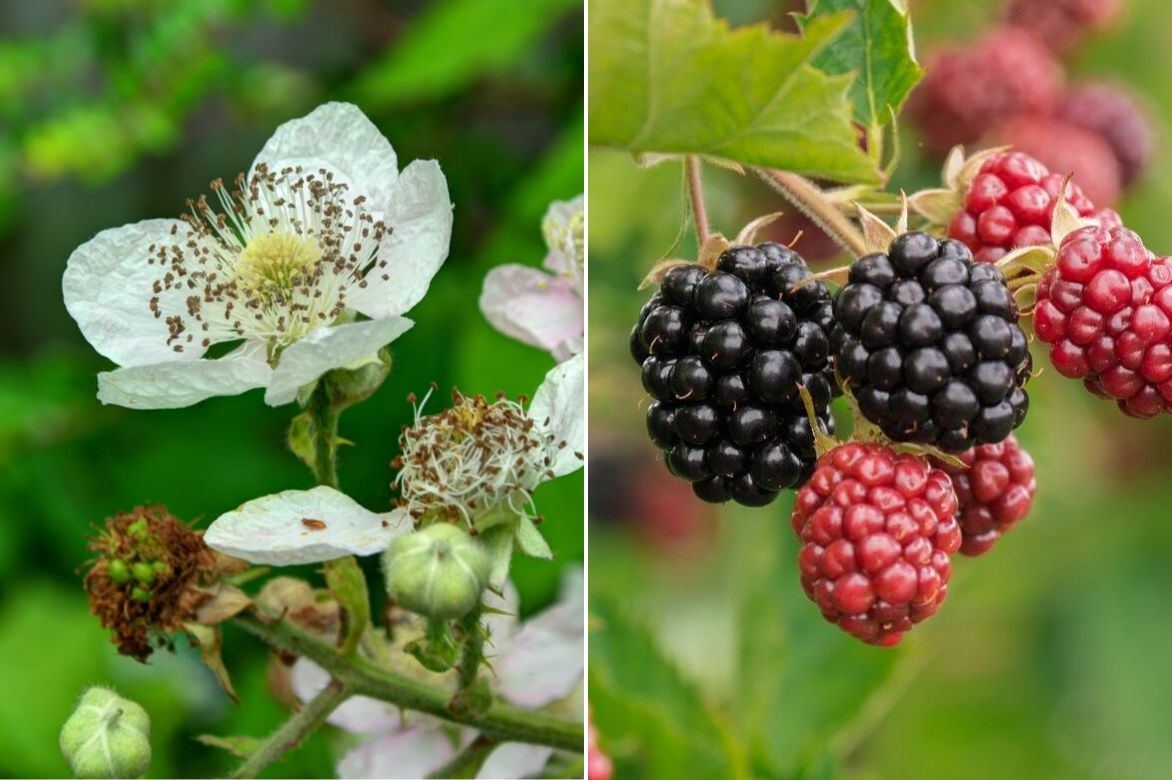
Blackberries: flowers and fruits
Read also
How to clear an area of brambles?Maintenance
Maintaining brambles is fairly simple as plant is undemanding.
- Add a layer of manure or compost once a year in autumn, making sure to cover stumps left by pruning of wood that has fruited.
- Water young plant regularly to encourage root establishment during first year after planting. Thereafter, provide extra water during periods of high heat or prolonged drought.
- Mound up bases, especially if your soil is very wet.
- Top up mulch on soil to maintain moisture and fertility.
- Watch for suckers appearing outside rank.
- When harvest is completely finished, cut exhausted shoots back to ground level.
Pruning brambles
This basically involves cutting back wood that has fruited in autumn and thinning new shoots destined to fruit the following year if they are too crowded.
For more about pruning: to grow blackberry, loganberry and tayberry.
Bramble bushes are rarely diseased; however they harbour a whole host of beneficial garden fauna such as seven-spot ladybirds, keen on aphids, predators of red spider mites, etc. Abundant leaves feed caterpillars of certain moths such as the bramble moth (Bombyx sp.), the small emperor moth, and many insects find refugium in pith of their stems, not forgetting that flowering is a food source appreciated by bees and bumblebees in spring.
Fruit-bearing brambles can, however, be attacked by the raspberry worm. Hoe soil in winter to expose cocoons and, if necessary, apply pyrethrin at end of flowering in the evening so as not to harm pollinating insects.
Harvest and storage
Blackberry harvest
Blackberries and dewberries should be picked when fully black; they are then sweet and tangy, juicy and flavoursome. Fruits reach ripeness when they detach easily from their support.
Storage of blackberries
Blackberries are eaten fresh in salads or tarts straight after picking as they only keep for a few days in the fridge drawer. It is recommended to freeze them on a tray or to process them quickly into jellies, jams or into sorbets, syrups or juices.
→ Discover our homemade blackberry syrup recipe in our tutorial! Learn more in our tutorial: How to harvest and store blackberries.
Propagation
Given the mulberry’s strong tendency to send up suckers and to layer, it is very easy to separate suckers, layers or to divide the clump for varieties that produce few suckers, preferably in autumn. You can also root cuttings in water or in soil.
Dividing a mulberry stump
- With a sharp spade, separate suckers that have 10 to 20 cm of rootstock.
- You can also lift the entire stump and divide it into 2 to 4 divisions with strong stems.
- Water generously before spreading mulch.
Uses and companion planting
In the garden, it is necessary to provide a support for training: wire mesh, trellis, fence or wall on which wires are fixed horizontally. Try to find attachments that are easy to remove since stems will be removed the year after harvest. Canes, whether woody-climbing or upright, will reach about 5 m in length. Rest assured, cultivated brambles produce numerous suckers at the base but are much less invasive than wild brambles.
You can thus combine several varieties of blackberry on a strip about 0.5 m wide with suitable training to form a hedge. This layout makes harvesting from both sides easier. This hedge can help mark out vegetable plot, with a path where it will be easy to remove wandering shoots. Blackberry bushes can also be included in a country-style planting alongside currant bushes, May berries, garden blackberries, dogwoods, wild roses, cranberry and service tree, all of which produce edible, vitamin-rich fruit. Planting in a container on a balcony is also easy to do, especially with compact dwarf, thornless varieties.
To learn more
Discover our range of blackberry bushes.
Discover our advice sheet: 5 red berries for beginners
Discover our advice sheet: Clearing a bramble patch
Treat yourself to Ingrid’s tutorial: blackberry jam recipe
Frequently asked questions
-
How to get rid of wild brambles?
If maintaining an established border, remove stems with as many roots as possible in April as soon as tender shoots emerge. For a well-established bramble, repeated removal will eventually weaken the stump if carried out during the last week of June, when the plant has put all its energy into flowering, and repeated for 2 to 3 consecutive years. Use a brushcutter or loppers depending on the scale of the task.
- Subscribe!
- Contents
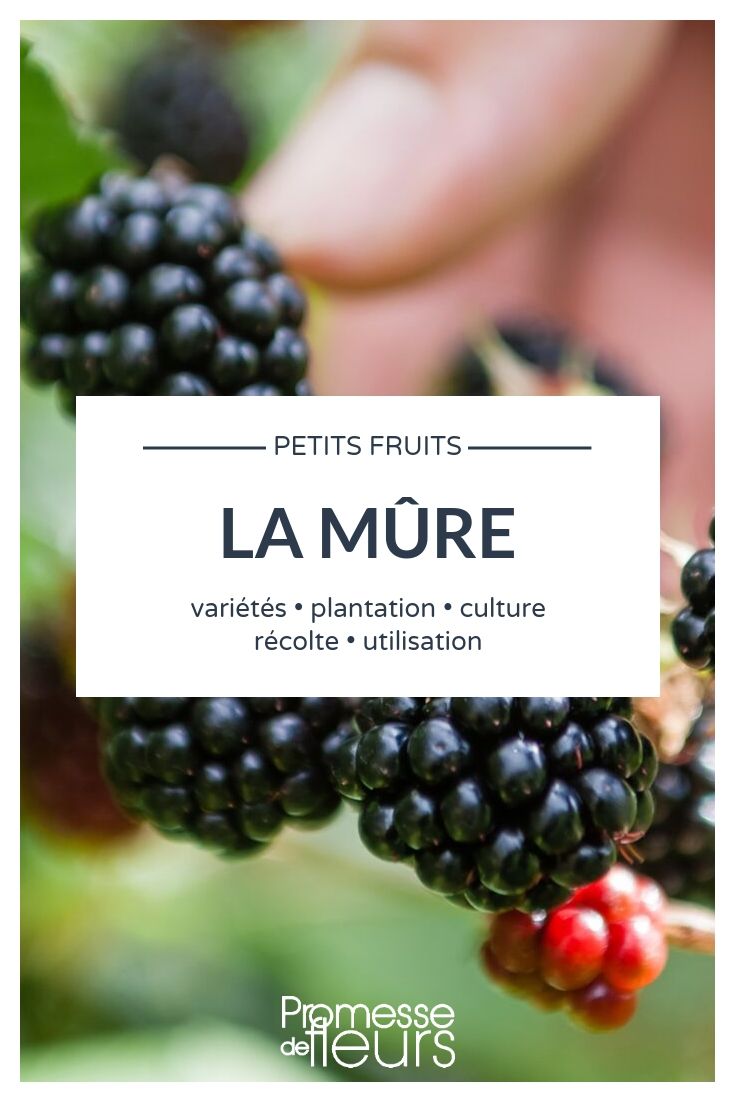































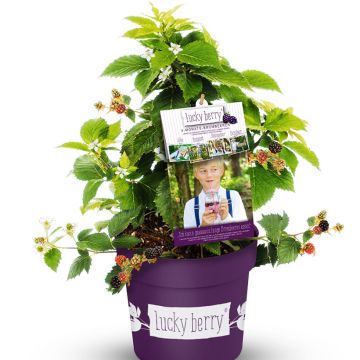
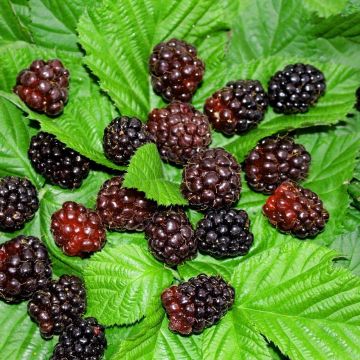
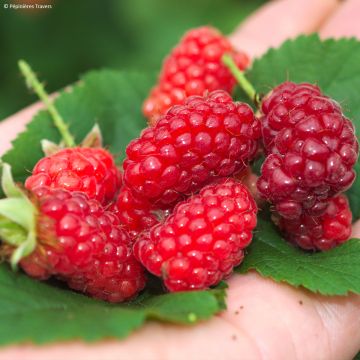
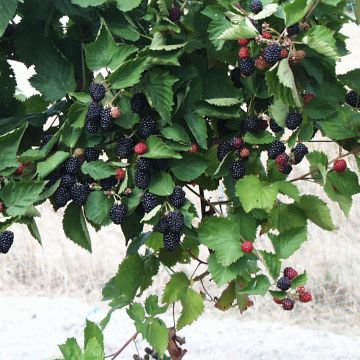
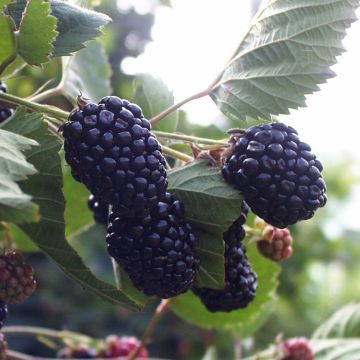
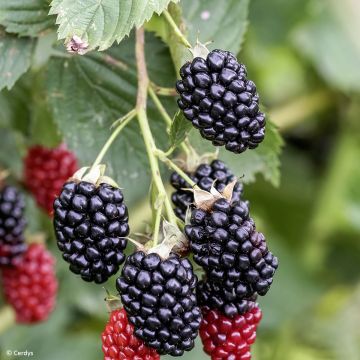
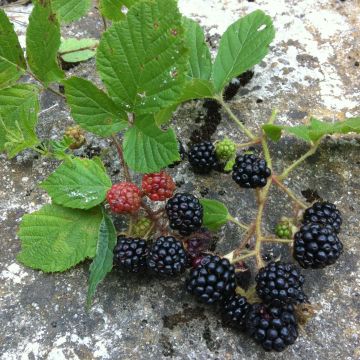
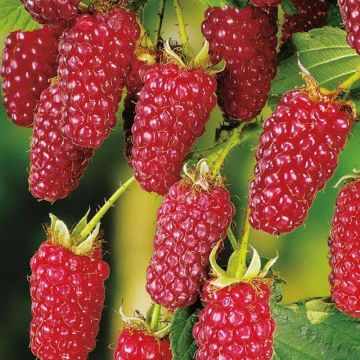
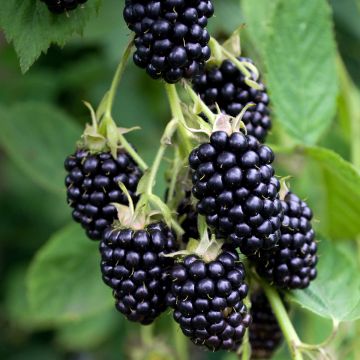
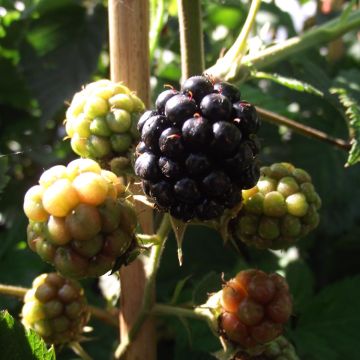
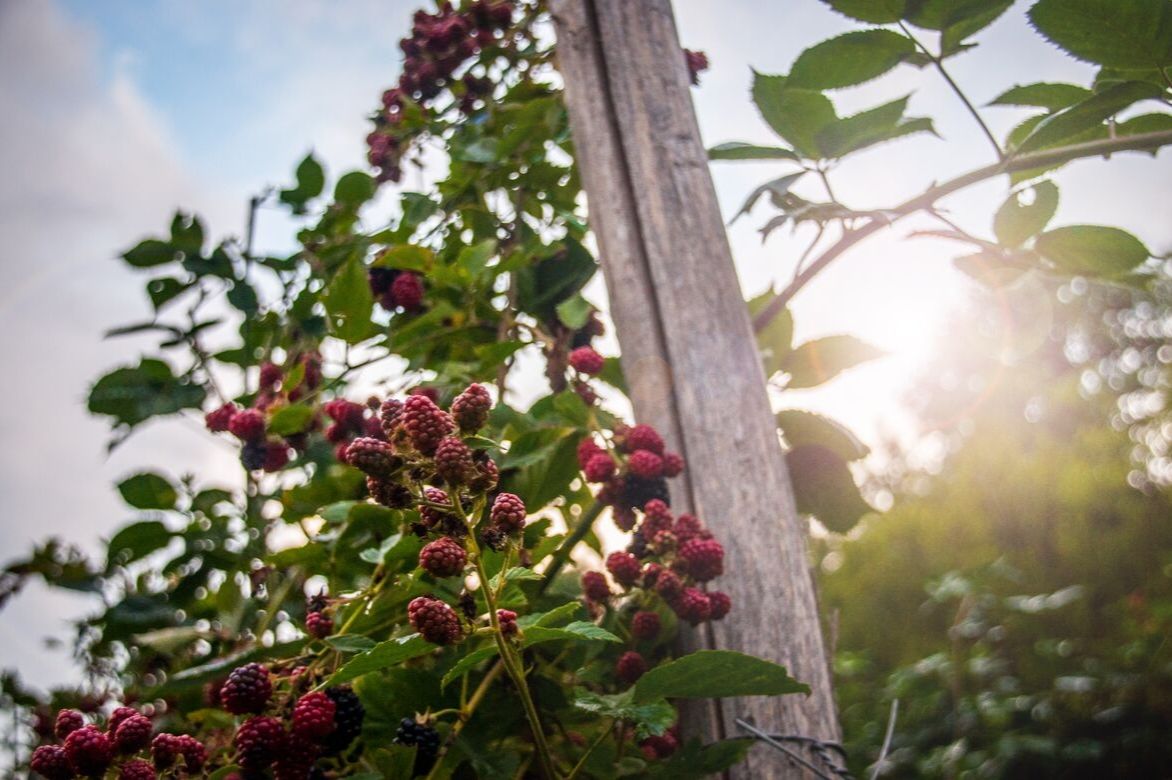
Comments